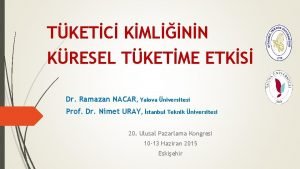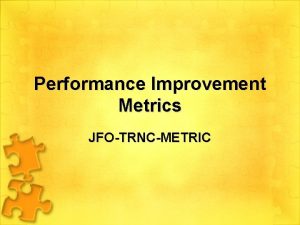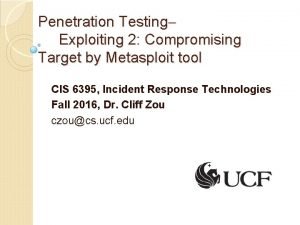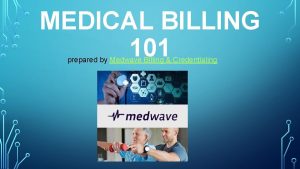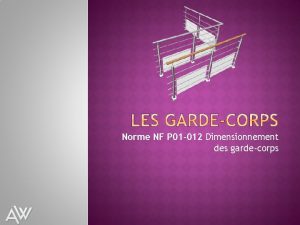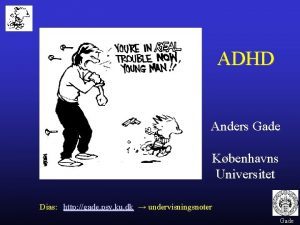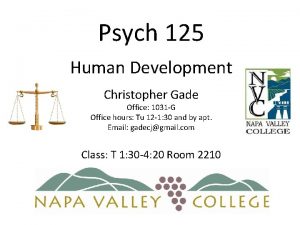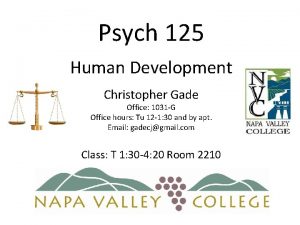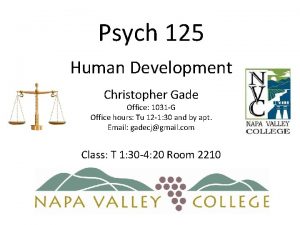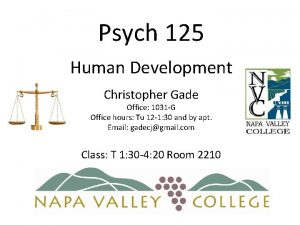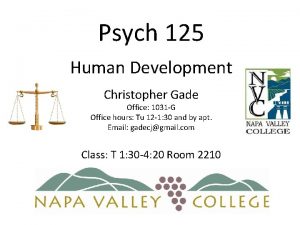Psychology 001 Introduction to Psychology Christopher Gade Ph

























- Slides: 25

Psychology 001 Introduction to Psychology Christopher Gade, Ph. D Office: 621 Heafey Office hours: F 3 -6 and by apt. Email: gadecj@gmail. com Class WF 7: 00 -8: 30 Heafey 650

Pop Quiz Questions 1. Where do our thoughts, memories, and perceptions occur in the human body? 2. How do we direct the motion of our bodies (e. g. how do we get our eyes, limbs, mouth, and other parts to move the way we want them to)? 3. What makes human unique from other animals, and what makes each of us unique from our peers?

Notes about the brain… � The brain is a dense, location specific organ that controls conscious and unconscious human functioning. � The spinal cord and nervous system allow our brains to efficiently communicate with our bodies. � Our knowledge about the specific regions of the brain and how they communicates is still limited.

Why do we know so little? � Time: • We have just begun to develop technology that allows us to look at the brain in a very efficient manner. � Money: • Most of the current technologies that we have are very, very expensive to use. This limits us in both the number, and type of individuals that conduct research on this topic. � Variety: • The brain and nervous system are, in relative terms, HUGE! There’s a lot to examine, and we’re just getting started.

How the mind/brain is studied… �In the past: • Philosophy and debate • Autopsy

How the brain/mind is studied (cont. ) �Currently: • Histology �Stains • Invasive Studies • Recording • Imaging

Reviewing Stains

How the brain/mind is studied (cont. ) �Currently: • Histology • Invasive Studies �Autopsies �Experimentation/stimulation on animals �Chance and correlation lesion studies �Phineas Gage case �Hemisphere neglect example �Transcranial Magnetic Stimulation (TMS) • Recording • Imaging

The Most Cited Lesion Example Ever… �Phineas Gage • Worked for a railroad company • Had a metal rod shot through his head • Survived the incident, but his behavior changed dramatically after the incident �Much more impulsive �More excitable and agitated �Struggled with the ability to maintain friendships, relationships, and conversation �“what was once a well mannered man, now became something that resembled a mere animal”

Example of Chance Anatomy Studies: Parietal Stroke (Hemisphere Neglect)

The Lesion Method � Strengths: • Can determine the necessity of a region for a certain cognitive process. � Weaknesses: • Lack of experimental control. • Time for plasticity. • Low number of subjects.

TMS Studies

How the brain/mind is studied (cont. ) �Currently: • Histology • Invasive Studies • Recording �Electroencephalogram (EEGs) �Event related potentials (ERPs) �Electrocorticography (ECog) • Imaging

Human Electrophysiology � Electrophysiology can record electrical potentials of large populations of simultaneously active neurons at the scalp �A direct measure of neural activity


Applications of Electroencephalography (EEG) INDIVIDUAL NEURON ACTIVITY COMBINED NEURON ACTIVITY

Electrocorticography (ECo. G)

How the brain/mind is studied (cont. ) �Currently: • Histology • Invasive Studies • Recording • Imaging �Computerized Tomography (CT Scans) �Positron Emission Tomography (PET Scans) �Magnetic Resonance Imaging (MRIs, and f. MRIs)

Why Neuroimaging? �In comparison to lesion studies, neuroimaging experiments tell us a whole slew of information about the brain with some distinct advantages. • • Noninvasive Allows us to look at people while living Allows us to get larger samples of individuals Note: they also look at more specific activity that mere recording methods.

Blood Flow Measures �The Beginning: CT Scans • CT scans were first introduced in order to see the structure of the brain (great for detecting abnormalities)

Positron Emission Tomography (PET) Measures variations in cerebral blood flow by tracking the decay of a radioactive tracer (an unstable isotope) usually tagged to water molecules. More blood = more neural activity…an indirect measure of neural activity

PET �PROs • Decent spatial resolution (510 mm 3) • Can also measure neurotransmitter metabolism. �CONs • Invasive • Very expensive • Poor temporal resolution (minutes) • Cannot detect the neural response to discrete cognitive events.

Functional MRI (f. MRI) �Advances over PET • Non-invasive (no radioactive agents required) • Better spatial resolution (1 mm) • Better temporal resolution (seconds rather than min) �How does it work? • Similar to PET in that it is an indirect measure of changes in blood flow • Blood flow is measured by the deoxygenating of the hemoglobin in your brain and a giant magnet spinning around your head

How the brain/mind is studied (cont. ) � Currently: • Histology �Stains • Invasive Studies �Autopsies �Chance and correlation lesion studies �Experimentation/stimulation on animals �Transcranial Magnetic Stimulation (TMS) • Recording �Electroencephalogram (EEGs) �Event related potentials (ERPs) �Electrocorticography (ECog) • Imaging �Computerized Tomography (CT Scans) �Positron Emission Tomography (PET Scans) �Magnetic Resonance Imaging (MRIs, and f. MRIs)

So what have we learned by examining the brain and nervous system through these techniques?
 Chris gade
Chris gade Direct and indirect speech worksheet
Direct and indirect speech worksheet Calli gade lgbt
Calli gade lgbt Ole gade sørensen
Ole gade sørensen Jessica gade
Jessica gade Chris gade
Chris gade Gade uca
Gade uca Mehmet nacar 001
Mehmet nacar 001 How to find the critical values
How to find the critical values Procentenheter
Procentenheter Acad 02-001
Acad 02-001 Vsftpd metasploit
Vsftpd metasploit Nom 001 stps 2008 edificios locales e instalaciones
Nom 001 stps 2008 edificios locales e instalaciones Numero decimal
Numero decimal Cpt 99366
Cpt 99366 Mama zosi kupiła 5 długopisów po 8 zł każdy
Mama zosi kupiła 5 długopisów po 8 zł każdy Pyp-001
Pyp-001 Aes 001
Aes 001 110 000 110 111 000 111
110 000 110 111 000 111 644 x 12
644 x 12 Osl standardpapier basis
Osl standardpapier basis Semt.001
Semt.001 Write 702 001 in expanded form
Write 702 001 in expanded form Nfp 01-013
Nfp 01-013 Easa cm-swceh-001
Easa cm-swceh-001 In mudra loan rs.50 001 to rs.500 000 are categorised as
In mudra loan rs.50 001 to rs.500 000 are categorised as







